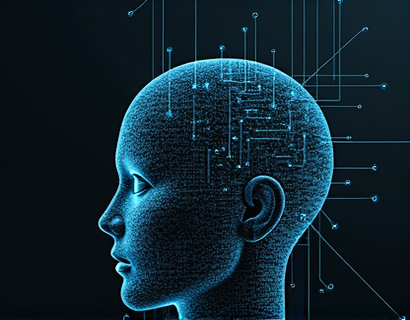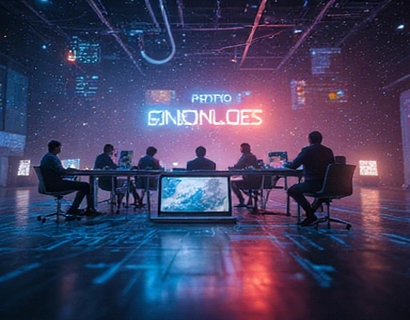AI-Powered Cosmic Learning: Interactive Exploration with Customizable Settings for Educators and Space Enthusiasts
In the realm of education and space exploration, the integration of artificial intelligence (AI) has opened new avenues for interactive and personalized learning experiences. This article delves into the concept of an AI-powered learning tool designed to make space and astronomy accessible, engaging, and customizable for both educators and space enthusiasts. By leveraging advanced AI technologies, this tool offers a unique platform for exploring the vast and intricate universe, tailored to individual interests and learning styles.
Enhancing Accessibility Through AI
The universe, with its countless celestial bodies and phenomena, presents a complex and often overwhelming subject for learners. Traditional methods of teaching astronomy can struggle to captivate and retain the interest of students, especially those with varying levels of prior knowledge. An AI-powered learning tool addresses these challenges by providing an interactive and adaptive learning environment. This environment adjusts to the user's pace, offering explanations and insights that are both accurate and comprehensible.
For educators, this tool serves as a valuable resource to supplement their curriculum. It allows them to present complex astronomical concepts in an engaging manner, catering to diverse learning preferences. Students can explore topics such as planetary formation, stellar evolution, and cosmic events through interactive simulations and detailed explanations. The AI's ability to adapt to user input ensures that each learner receives a personalized educational experience, making the subject matter more approachable and enjoyable.
Customizable Learning Settings
One of the key features of this AI-powered learning tool is its customizable settings. Users can tailor their learning experience based on their interests, knowledge level, and preferred learning style. For instance, a beginner might choose to start with basic concepts and gradually progress to more advanced topics, while an advanced learner can dive straight into detailed analyses and research-level content.
The customization extends to the type of content presented. Users can select from a variety of formats, including text, images, videos, and interactive simulations. This multi-modal approach caters to different learning preferences, ensuring that visual, auditory, and kinesthetic learners all benefit from the tool. Additionally, users can adjust the level of detail and complexity, allowing for a learning journey that is both challenging and rewarding.
Interactive Explorations
Interactive explorations are a cornerstone of this AI-powered learning tool. Users can embark on virtual journeys through the solar system, explore distant galaxies, and witness cosmic events in real-time. These interactive experiences are designed to be immersive and educational, providing a deeper understanding of the universe's workings.
For example, users can simulate a trip to Mars, learning about the planet's geology, atmosphere, and potential for future human exploration. They can interact with 3D models of spacecraft, analyze data from Mars rovers, and even plan their own hypothetical mission. Such hands-on activities not only enhance comprehension but also spark curiosity and inspire further learning.
Personalized Learning Paths
The AI's adaptive algorithms create personalized learning paths for each user. By tracking user interactions and performance, the tool identifies areas of strength and weakness, adjusting the content accordingly. This personalized approach ensures that users are consistently challenged and engaged, preventing boredom and frustration.
For educators, this feature is particularly useful for identifying students' understanding and progress. The tool can generate reports that highlight areas where students may need additional support, allowing educators to provide targeted interventions. This data-driven approach enhances the overall educational experience, making it more effective and efficient.
Engaging with Celestial Phenomena
One of the most exciting aspects of this AI-powered learning tool is its ability to bring celestial phenomena to life. Users can witness and learn about events such as solar eclipses, meteor showers, and planetary alignments in a highly interactive manner. The tool provides real-time data and historical context, offering a comprehensive view of these phenomena.
For instance, users can simulate a total solar eclipse, observing the Moon's shadow moving across the Earth's surface and learning about the scientific principles behind this rare event. Interactive diagrams and animations help demystify complex processes, making them accessible to learners of all ages.
Astronomical Concepts Explained
Understanding astronomical concepts can be challenging, but this AI-powered tool simplifies the learning process. The AI provides clear, concise explanations of key concepts, supported by visual aids and interactive elements. Topics range from basic astronomy, such as the phases of the Moon and the structure of the solar system, to more advanced subjects like dark matter, black holes, and exoplanets.
The tool uses analogies and real-world examples to make abstract concepts more relatable. For example, it might explain the concept of light-years by comparing it to the time it takes for a car to travel a certain distance at a specific speed. These relatable explanations help bridge the gap between complex scientific ideas and everyday understanding.
Supporting STEM Education
The integration of AI in cosmic learning significantly supports STEM (Science, Technology, Engineering, and Mathematics) education. By making astronomy more accessible and engaging, this tool encourages students to develop an interest in STEM fields. The interactive and hands-on nature of the tool aligns well with STEM educational goals, fostering critical thinking, problem-solving, and scientific literacy.
Educators can use the tool to create project-based learning activities that integrate astronomy with other STEM subjects. For example, students can design their own spacecraft, considering factors such as propulsion, life support, and navigation. This interdisciplinary approach not only deepens their understanding of astronomy but also enhances their overall STEM skills.
Community and Collaboration
The AI-powered learning tool also fosters a sense of community among users. Users can join forums, participate in discussions, and collaborate on projects with peers and experts from around the world. This community aspect enhances the learning experience by providing opportunities for knowledge sharing and collaborative problem-solving.
Educators can leverage this feature to create online classrooms or study groups, where students can work together on astronomy projects. The AI can facilitate these interactions by providing guided discussions, resources, and feedback, ensuring that the learning remains focused and productive.
Continuous Learning and Updates
The universe is an ever-evolving field of study, with new discoveries and advancements occurring regularly. The AI-powered learning tool stays up-to-date with the latest research and findings, ensuring that users have access to the most current information. This continuous update mechanism is crucial for maintaining the tool's relevance and educational value.
For educators, this means they can confidently use the tool to teach the most recent developments in astronomy, keeping their curriculum current and engaging. Users can also benefit from real-time updates on cosmic events, such as new asteroid discoveries or changes in planetary conditions, enhancing their learning experience with the latest data.
Conclusion
In conclusion, an AI-powered learning tool for cosmic exploration offers a revolutionary approach to education and space enthusiasm. By providing interactive, customizable, and engaging content, it makes astronomy accessible and enjoyable for everyone. Whether you are a student, educator, or space enthusiast, this tool serves as a powerful resource for deepening your understanding of the universe. As technology continues to advance, the potential for AI in education and space exploration is vast, promising a future where learning about the cosmos is more immersive and personalized than ever before.










































